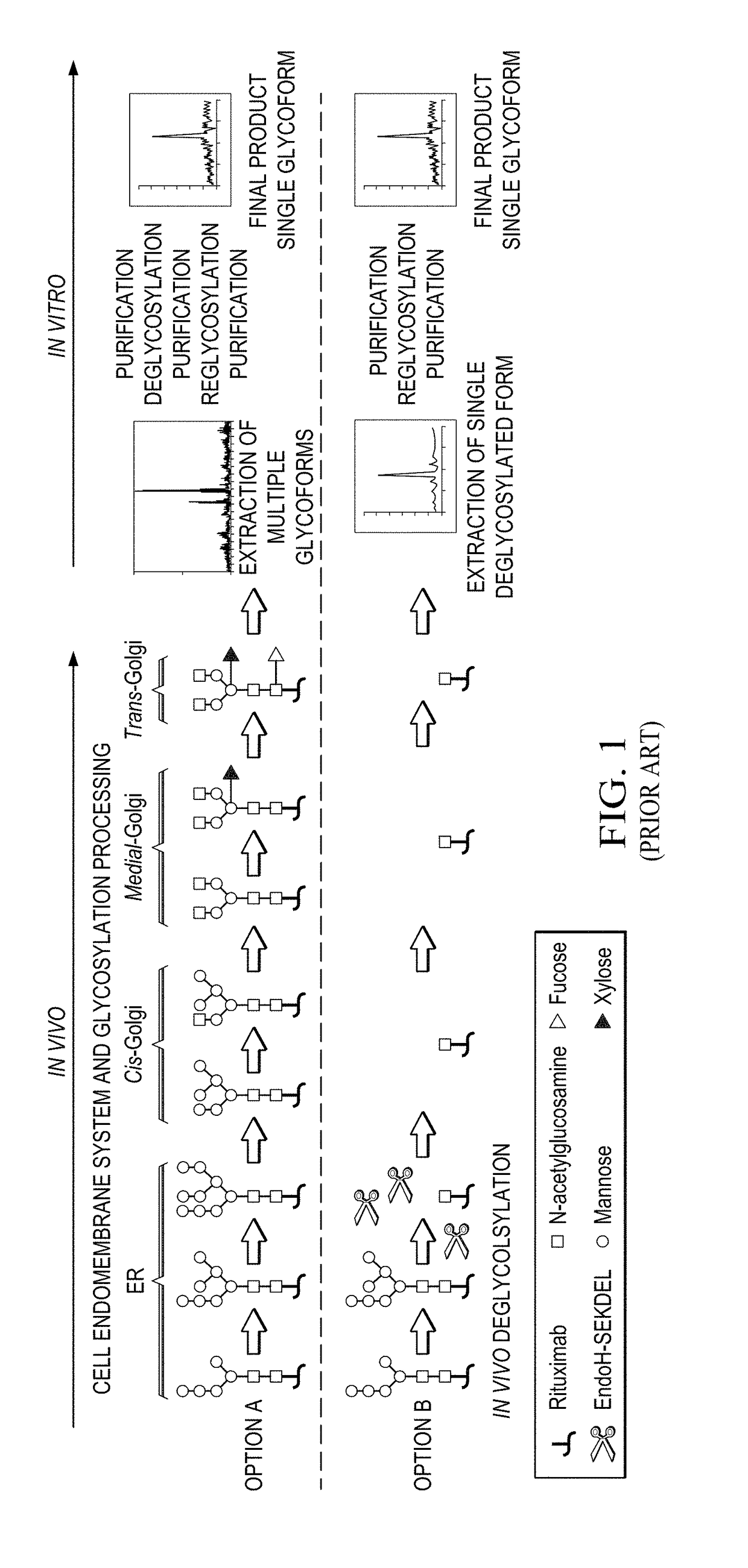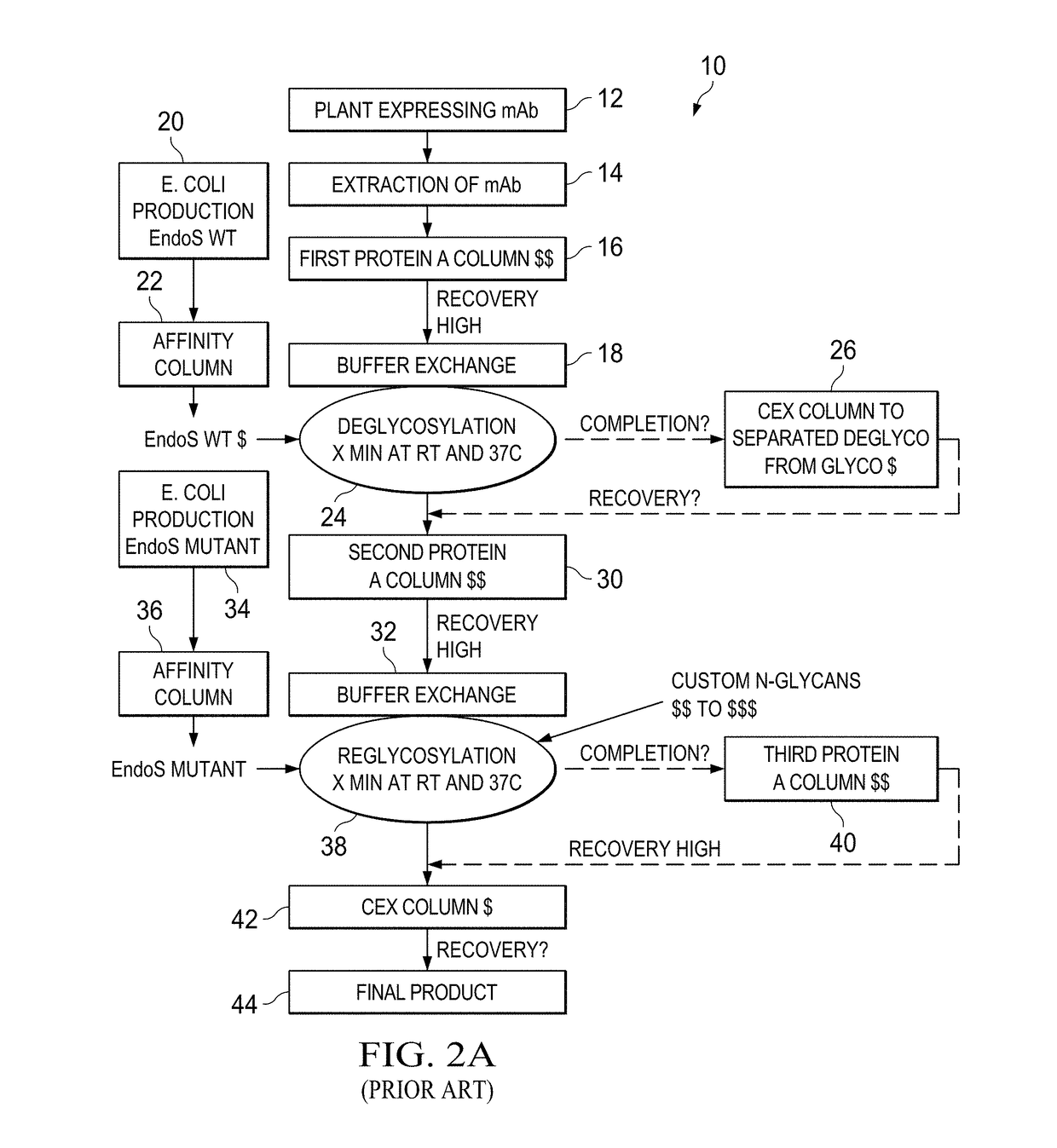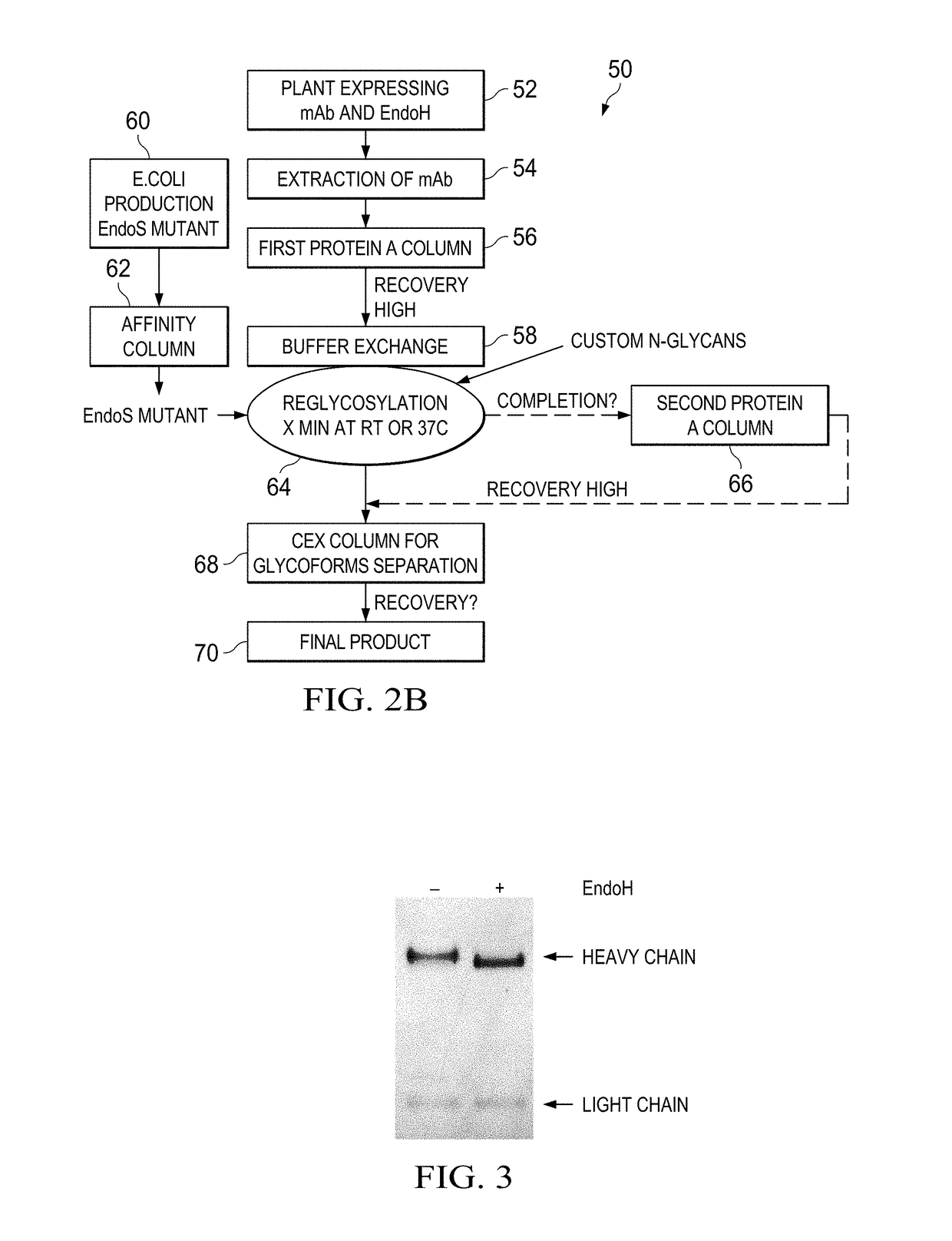Method for in vivo production of deglycosylated recombinant proteins used as substrate for downstream protein glycoremodeling
a recombinant protein and glycosylation technology, applied in the field of posttranslational protein modification, to achieve the effect of reducing the glycosylation of proteins
- Summary
- Abstract
- Description
- Claims
- Application Information
AI Technical Summary
Benefits of technology
Problems solved by technology
Method used
Image
Examples
example 1
In Vivo Deglycosylation of a Monoclonal Antibody (Human IgG1)
[0066]In Example 1, the inventors produced a human IgG1 (hIgG1) in Nicotiana benthamiana plants and remove in planta N-linked oligosaccharides after the first GlcNAc from the heavy chain with the ultimate goal of engineering an afucosylated and sialylated single glycoform antibody product. To reach this goal, we transiently expressed the light and heavy chain of the hIgG1 together with the endoglycosidase H fused to the endoplasmic reticulum retrieval signal SEKDEL (SEQ ID NO.: 1) using plant vacuum agroinfiltration. Endoglycosidase H (EndoH) specifically cleaves high-mannose glycans, which are glycoforms found in the ER of eukaryote cells (e.g. plants and mammalian cells). At this stage (protein localized in the ER) of plant N-glycosylation processing, the fucose residue has not been added to the N-glycan core of the protein yet. Therefore, the cleavage of high-mannose glycans will allow the production of deglycosylated a...
example 2
In Vivo Deglycosylation of a Monoclonal Antibody (Rituximab)
[0067]In example 2, the inventors repeated the in vivo deglycosylation of another monoclonal antibody: the chimeric anti-CD20 antibody rituximab. Rituximab heavy and light chains were expressed in plant either alone or with EndoH. Once purified from plant total extracts, plant-made rituximab samples were analyzed by matrix-assisted laser desorption ionization time-of-flight mass spectrometry (MALDI-TOF MS) to determine if in planta deglycosylation by EndoH was consistent with the in vitro deglycosylation process where the anchored N-acetylglucosamine (GlcNAc) remained with the asparagine residue of the protein and / or tryptic peptide fragment. To confirm this process, both full-length and tryptic peptide MALDI-TOF spectra were acquired for (1) the innovator molecule (Rituxan®), (2) plant-made rituximab and (3) the plant-made rituximab that was deglycosylated in planta with EndoH.
[0068]FIG. 6 shows the MALDI-TOF spectrum of t...
example 3
In Vivo Deglycosylation of a Multi-Glycosylated Subunit Vaccine Candidate
[0069]The in vivo deglycosylation of the glycoprotein E2 from the Classical Swine Fever Virus (CSFV) was determined by co-expressing EndoH with the target protein. The CSFV E2 protein represents a different protein model as it is heavily glycosylated holding seven (7) potential N-glycosylation sites, although one N-glycosylation site is unlikely to be used since it is in close vicinity to another N-glycosylation site. Remodeling subunit vaccine protein candidates with native N-glycans found in the infected host may offer higher antigen immunogenicity thus more efficient vaccination. In order to facilitate the purification of the target protein, E2 was fused to the 6× histidine tag. E2 forms dimers when expressed in plants and the size difference between the glycosylated and potential deglycosylated E2 dimer can be easily detected on a protein gel. When E2 was expressed in plants, dimer glycoforms were produced ...
PUM
| Property | Measurement | Unit |
|---|---|---|
| mass | aaaaa | aaaaa |
| mass | aaaaa | aaaaa |
| mass | aaaaa | aaaaa |
Abstract
Description
Claims
Application Information
 Login to View More
Login to View More - R&D
- Intellectual Property
- Life Sciences
- Materials
- Tech Scout
- Unparalleled Data Quality
- Higher Quality Content
- 60% Fewer Hallucinations
Browse by: Latest US Patents, China's latest patents, Technical Efficacy Thesaurus, Application Domain, Technology Topic, Popular Technical Reports.
© 2025 PatSnap. All rights reserved.Legal|Privacy policy|Modern Slavery Act Transparency Statement|Sitemap|About US| Contact US: help@patsnap.com



